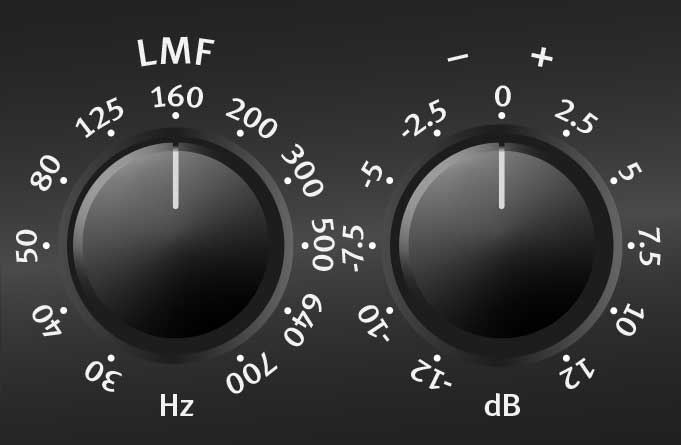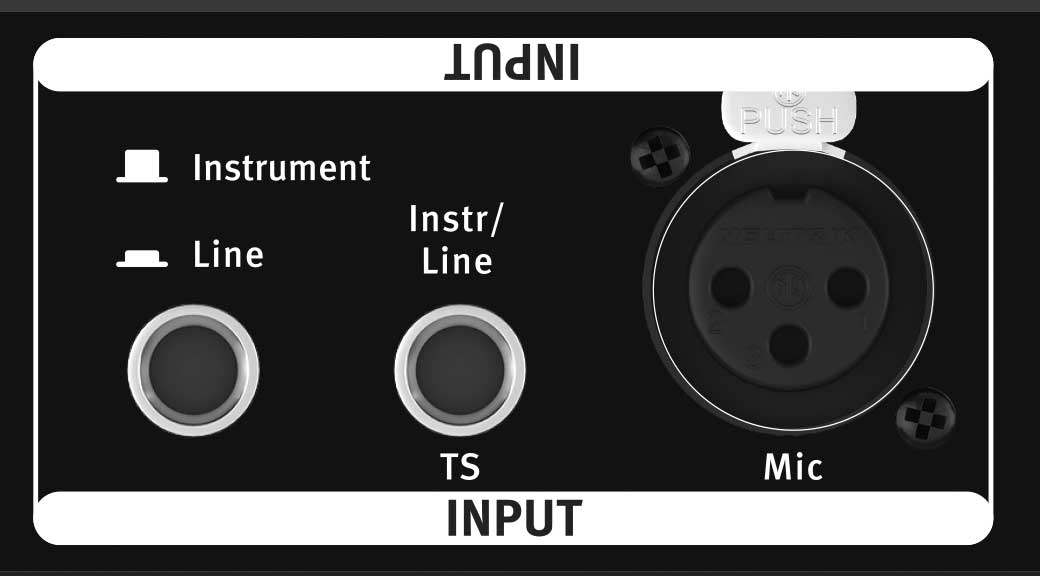
Preamplifiers
The Track One is equipped with two preamps:
a microphone preamp with 48V phantom power and
a separate instrument preamp.
Both are tuned to a sound-neutral, open and transparent characteristic.
12972 kr incl VAT
1ch channelstrip
Available on backorder
In broadcast and voice recording, the compact channel strip has already made a big name for itself. Whether singer-songwriter, live event or podcast – Track One always delivers a great sound. It enriches the microphone, line or instrument signal. De-esser, compressor/limiter and equalizer ensure professional results.
The high-quality recording and mixing channel strip has been improved again with the latest Mk3 version in some technical details and optimized with the needs of modern recording studios in ind. The new design of the SPL Studio Series provides this third generation Track One with a more intuitive and at the same time classy design.


The Track One is equipped with two preamps:
a microphone preamp with 48V phantom power and
a separate instrument preamp.
Both are tuned to a sound-neutral, open and transparent characteristic.
The gain control can be used to adjust the preamplification. For microphone signals, a preamplification of up to 63 dB can be realized – so even really demanding microphones can show their qualities.
The control range for line signals ranges between -12 dB and +22 dB.
The control range for instrument signals ranges between 0 dB and +35 dB.


Track One Mk3 offers the possibility to process line signals.This means that sources with line level, such as an analog signal from an audio interface, can be processed with de-esser, compressor, limiter and equalizer and then be recorded again. In this way, Track One Mk3 becomes an “analog plugin” within an insert of a DAW.
The 48V switch activates the required phantom power of 48 volts for the use of condenser microphones.


A highpass filter with 6 dB per octave reduces impact noise below 80 Hz.

Unobtrusively and effectively, the Auto-Dynamic De-Esser removes distracting S-sounds, in a mix or on vocal tracks. S-frequencies get detected and mixed back phase-inverted into the main signal, thus simply deleting sibilants in the original signal. The Auto-Threshold control maintains constant processing even as the singer’s distance from the microphone varies. The result is tonally neutral, unobtrusive and extremely effective. Even at high S-reduction values, the de-essing has no significant effect on the character and timbre of the voice.
Operation is limited to setting the desired sibilance reduction via the
S-Reduction control. The On switch activates the De-Esser.

Review with Audio Examples → @ Amazona.de

“Excellent manufacturing, very helpful in mixing, technically and sonically outstanding, easy to use.”
Amazona
Jörg Hoffmann

The compressor is also extremely easy to operate via a controller; its strength lies in its unobtrusive, musical operation.
The compressor/limiter section has excellent specifications in terms of noise and distortion.

The Compression control can be used to set a threshold between 0 dB and -20 dB. The lower the threshold, the more the compressor works.
The Gain Reduction display indicates the processing that is being performed with the compressor. The level reductions due to compression are displayed in 1.5 dB steps.


The Make-Up Gain control can be used to make up for the overall level reduction caused by compression. A value between 0 dB and 20 dB can be set by which the level is increased again after compression.
With the help of the Gain Reduction display on the panel, the adjustment is very simple: if the maximum reduction value caused by the loudest part is e.g. -9 dB, the Make-Up Gain control should be set to values around +9 dB.
The On switch activates the compressor section, consisting of the compression control and the Make-Up Gain.


The Limiter switch puts the compressor into limiter mode. The threshold is still set by the compression knob.
The limiter is designed as an unobtrusive working soft limiter.
In the Track One Mk3 compressor, the parameters for the time constants (including attack and release) are set automatically and thus adapt to the changing conditions of the input signal better than it would ever be possible with a manual control.
The attack time of a compressor should respond quickly to explosive P or T sounds and act more slowly on soft onset sounds, otherwise sound coloration may occur. The compressor in the Track One Mk3 therefore adjusts faster to large level increases than to small ones; long held notes are automatically processed with a long attack time.
The control of the release time also depends on the input signal. Fast and large increases in level are accordingly processed with shorter time constants than small increases in level. Comparable to the attack time control, small increases in level are adjusted with large time constants in order to keep the distortion of the audio signal as low as possible. This technique represents the perfect balance between fast, unobtrusive control behavior and the lowest possible distortion, resulting in a natural and transparent sound image.


The center frequency of the half-parametric bass filter is set with the LMF control (low/mid frequencies). The adjustable frequency range is between 30 Hz and 700 Hz so that this filter covers a range of about 4.5 octaves, allowing it to be used from the deepest bass to the lower mid range. This together with the MHF filter ensures that the entire frequency spectrum is covered.
The -/+ control (right to the LMF control) determines the boost or cut of the LMF filter.
The maximum values are +/-14 dB. The LMF filter also operates to the proportional-Q-principle, in other words the bandwidth is dependent on the selected boost or cut. This filter characteristic permits a musically more sensible processing of the frequency spectrum than with constant-Q filters: if a more thorough setting has been chosen this will lead to far preciser definition of the frequency range to be processed. This in turn minimizes influences from adjacent ranges. The boost or cut values, in relation to the bandwidth, are higher than with the MHF filter. The bandwidth is therefore narrower at maximum boost than with the MHF filter for even more precise filtering. The LMF filter can be applied in many ways. Examples are; to accentuate the fundamental sound of a voice, to cut boom frequencies and for placement of bass emphasized instruments during recording or subsequently when mixing.
The center frequency of the semi-parametric mid/high frequency filter
is set with the MHF control. (MHF: mid/high frequencies). The frequency range can be set between 680 Hz and 15 kHz so that this filter covers a range of 4.5 octaves and can be equally employed in the lower mid as well as the high range.

The -/+ control determines the boost, or cut of the MHF filter; the maximum values are +/-12 dB.
The MHF filter utilizes the proportional-Q-principle, too: the higher the boost or cut values are set, so the bandwidth becomes narrower; by low boost or cut values the bandwidth increases. The filter construction permits the complete scope, from selective removal of accentuated frequen- cies through to character giving accentuations of an instrument, to be effectively and quickly covered.

The high frequency filter in the equalizer module is described as AIR. A coil-capacitor filter with so called bell characteristics and a center frequency of 19 kHz comes into operation here. At this frequency the maximum possible accentuation is +10 dB, the maximum possible damping is -10 dB.
The soft and natural tonal property, characteristic of the coil-capacitor filter, lends itself extremely well to provide clarity and air to vocals in the upper frequency range thereby improving their presence. On the other hand harsh sounds can be lent a more pleasant sound characteristic through damping.
The outgoing signal can either be dampened to -20 dB or further amplified by +5.5 dB with the Output control to provide optimal drive to the subsequent units or the optional AD converter.
The selected output level is shown on the PPM OUTPUT display in the display field.



The S-Detection LED “S-DET.” lights up as soon as an S sound is detected. It is only active when the de-esser is switched on, but it works independently of the set reduction value. In other words, it always indicates that the circuit is detecting sibilants – so your focus is always directed to a possible need to control.

The clip LED “CLIP” lights up as soon as an overload is detected in the device. The indicator picks up at all relevant points of the signal flow: after the preamp, after the compressor, after the equalizer and after the output control. The LED should light up as seldom as possible to avoid negative sonic artifacts.

The signal LED “SIG.” lights up as soon as an input signal with a higher level than -30 dB is detected.

The PPM OUTPUT display shows the peak reading of the output level. This display also serves to level the preamplifier.

The Gain Reduction indicator provides information about the processing performed by the compressor.
The inputs and outputs of the Track One Mk3 are equipped with Neutrik XLR sockets and plugs with gold-plated contacts. The signal transmission is electronically balanced, at a nominal level of +6 dBu.


Microphones of all types can be connected to the Mic socket (dynamic, condenser, tube, and ribbon microphones). 48 volts phantom power, which is required for some microphones, can be activated with the 48 V switch on the front panel.
Use the unbalanced Instr./Line socket for high-level line or instrument signals. Line signals usually have impedances lower than 1 kΩ, examples are sources like D/A converters, synthesizers or samplers. Instrument signals, such as e-guitars and basses, acoustic guitars with pick-ups and so on, are high
impedance sources.
The balanced Outputs deliver the output signals.


The Compressor Link feature allows to operate two Track One compressors with one control signal to ensure coherent stereo results.
The Master/Slave switch determines which device operates as master and which device is being controlled as slave.
Track One Mk3 has a 4 mm thick, black anodized aluminum front panel and aluminum knobs milled from solid. The housing is made of high-quality steel and is powder-coated in elegant black.

With all SPL devices we develop not only according to plan, but also by ear. Many important components are installed on the circuit boards using Through-hole technology. This way we can ensure that we can use the best sounding components.

Transformers are used as an alternative to electronic balancing stages in the inputs and outputs. Transformers can be found in many classics of audio engineering. They make the bass and fundamental tines rounder and give it a little more punch. The high and overtone range sounds a bit silkier and more present. We find transformers to be advantageous, especially for voices. For highest precision and speed in signal transmission (transient processing), however, electronic stages are better suited. The bottom line is that it is a question of taste and application.
In the case of preamplifiers or channel strips, the 2161 input transformer, which is specially designed for microphone inputs, provides an additional gain of up to 14 dB (depending on the microphone), which must then be added to the scaling. This relieves the microphone preamplifier. Since the transformer ratio passively increases the level, No noise is added. Therefore, the input transformer is more important than the output transformer in preamplifiers.
The Track One Mk3 can be ordered with an optional input transformer for the microphone input. The product with input transformer is called:
Track One Mk3 – Premium
| Weight | 3 kg |
|---|
